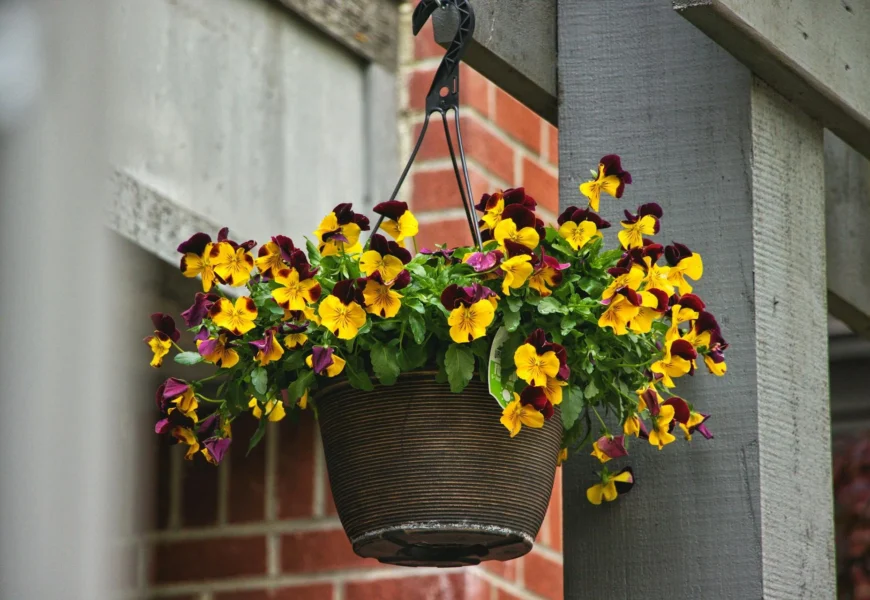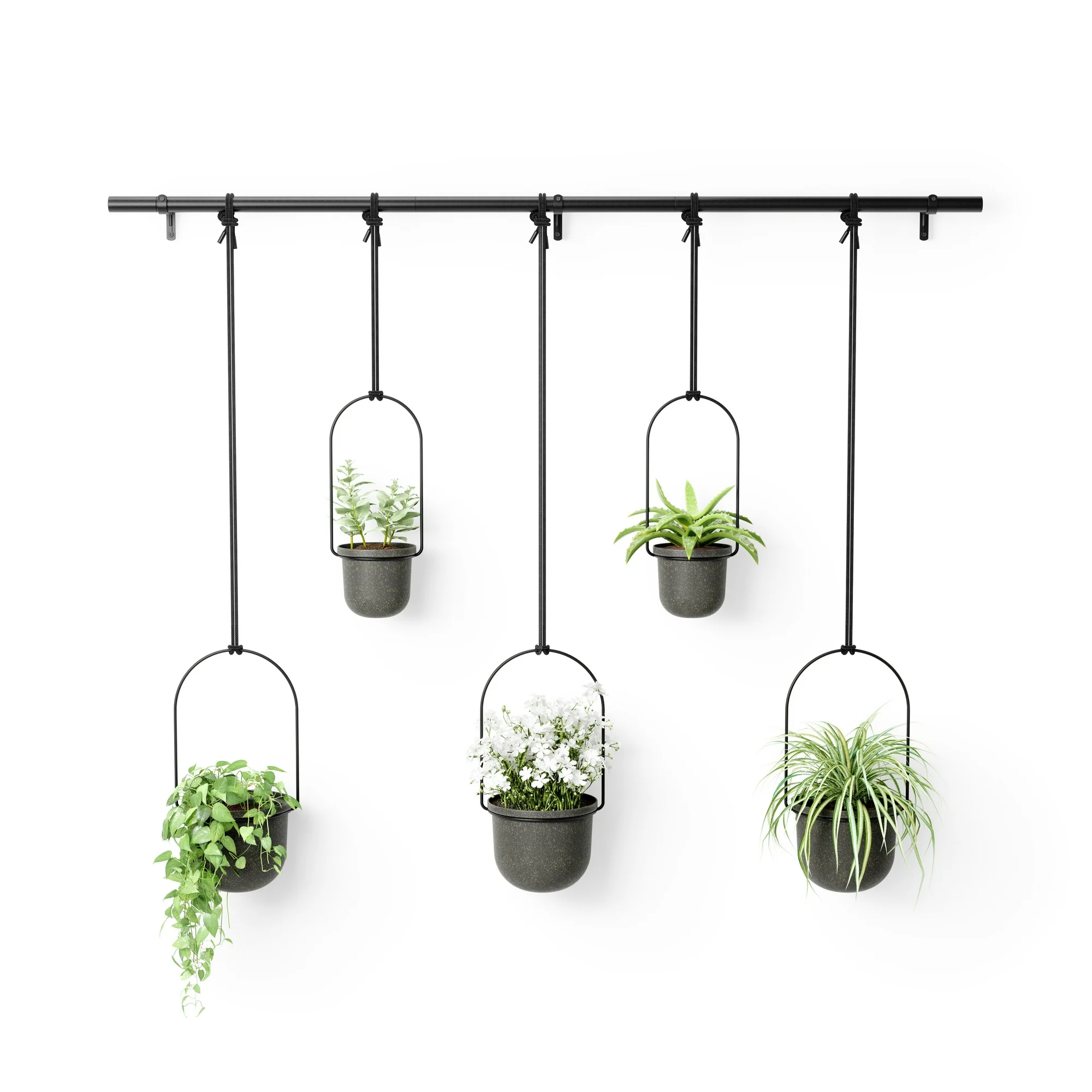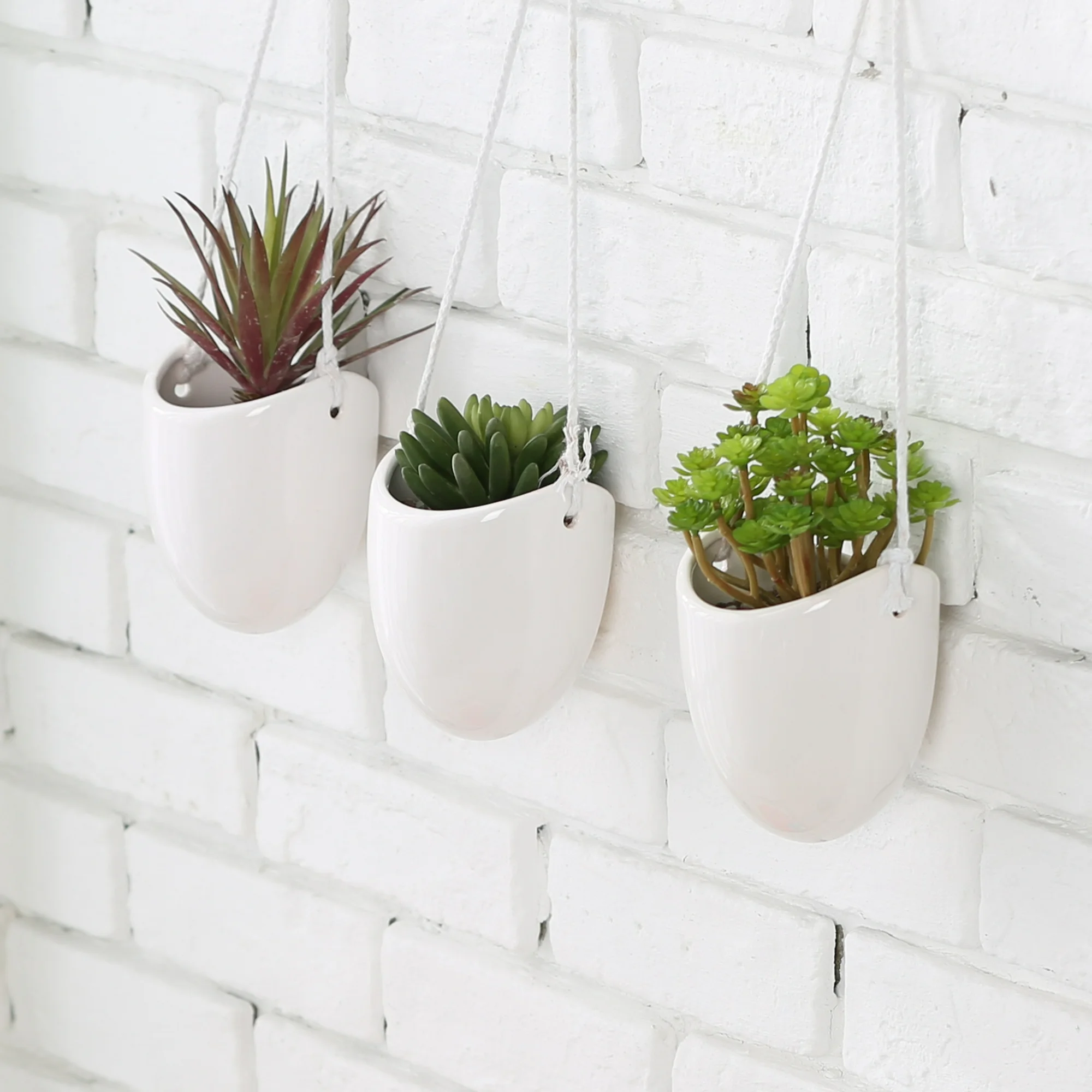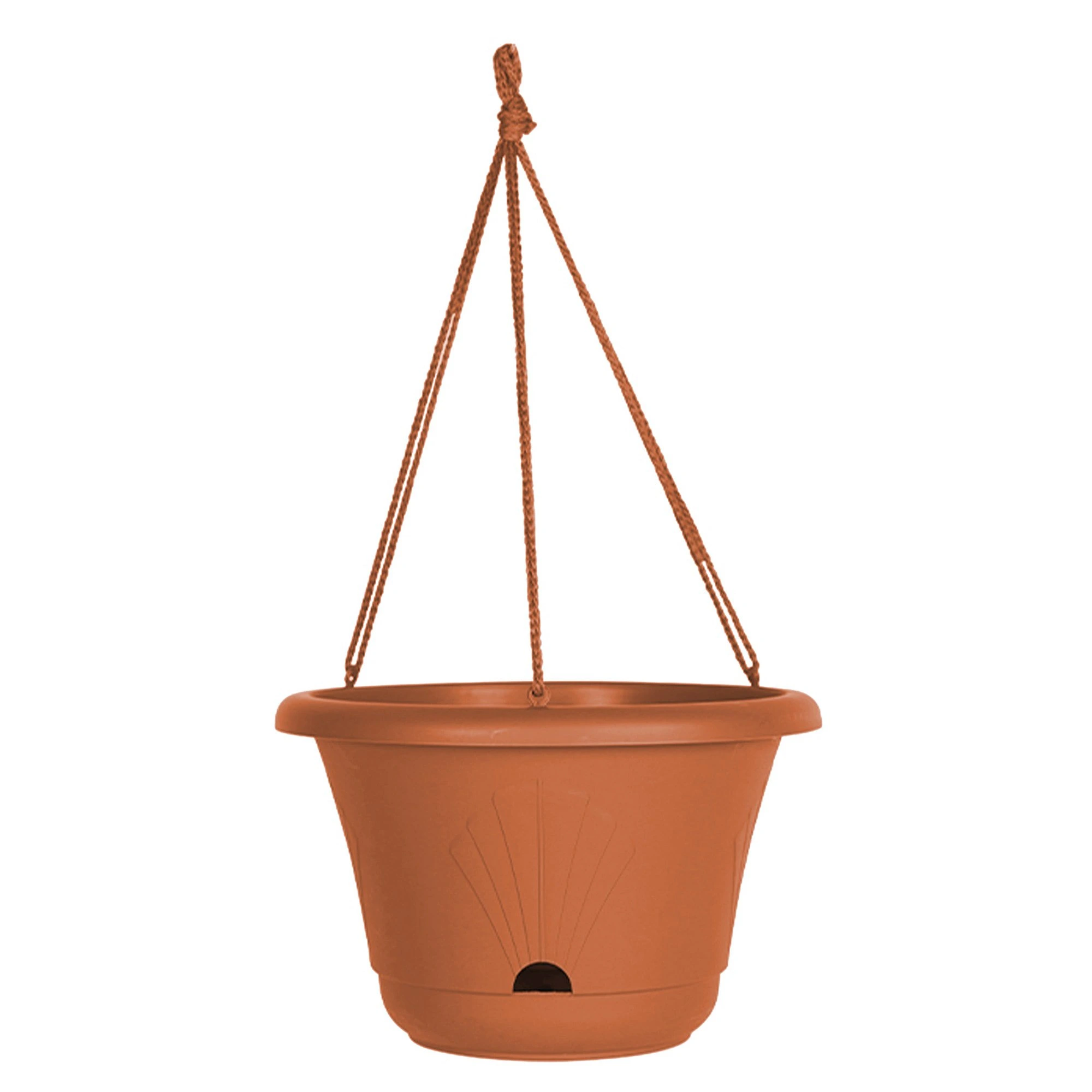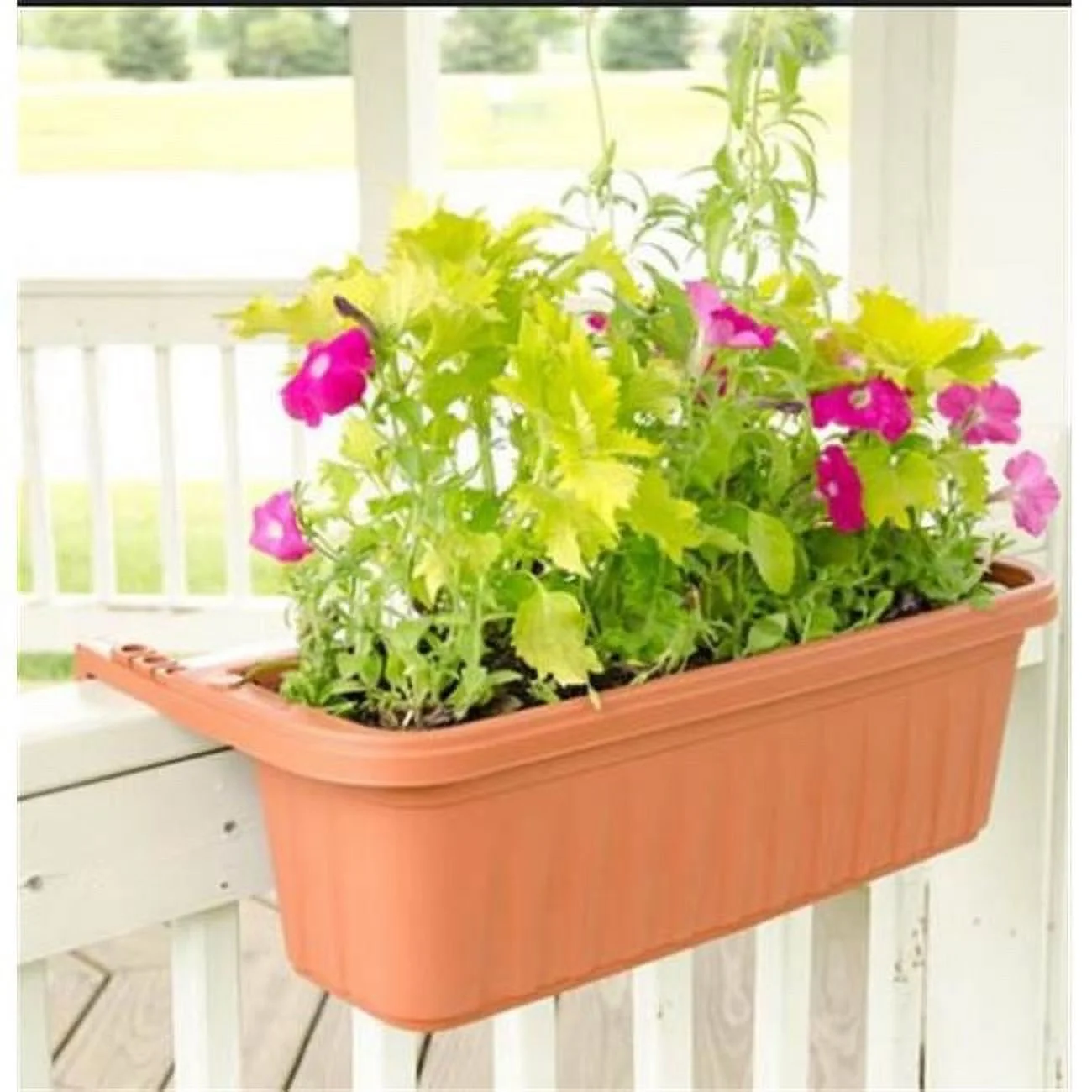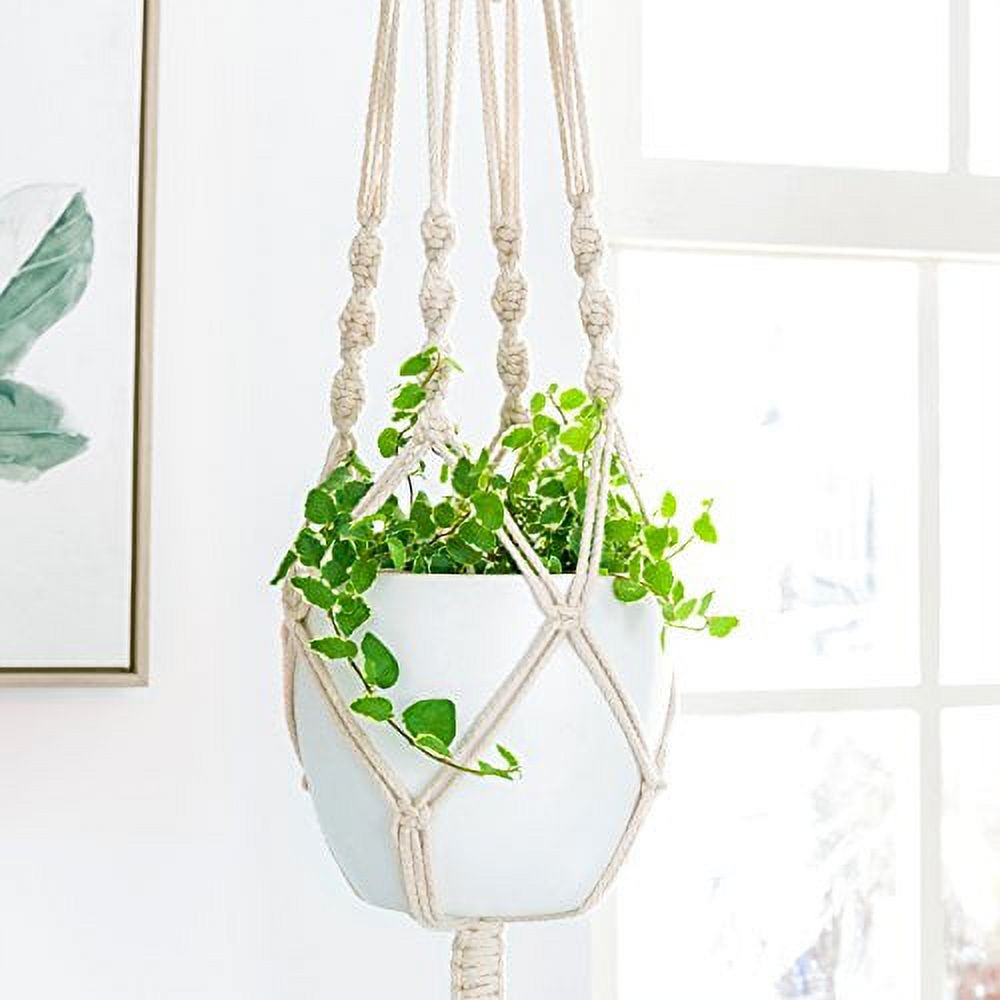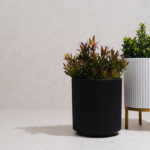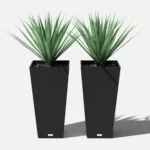Let’s face it, hanging planters are a stylish way to bring life to your home or garden, but they often require a bit of extra TLC. Who wants to constantly worry about watering their aerial greenery? That’s where self-watering hanging planters step in, offering a clever solution for busy plant parents.
Table of Content
This guide delves into the captivating world of self-watering hanging planters, exploring their benefits, different types, and the key factors to consider when choosing the perfect one for your leafy companions. We’ll also uncover some tips and tricks to keep your plants thriving in these innovative containers.
Here’s what we’ll cover in this comprehensive guide:
- The Advantages of Self-Watering Hanging Planters: Why these planters are a boon for your botanical buddies.
- Types of Self-Watering Hanging Planters: Exploring the diverse array of styles, from minimalist to ornate.
- Factors to Consider When Choosing Your Perfect Planter: Helping you select the ideal container for your plants.
- Tips for Success with Self-Watering Hanging Planters: Guiding you to keep your plants happy and flourishing.
Are you ready to elevate your plant game and bid farewell to perpetual watering worries? Let’s embark on this botanical journey together!
Why You Need Self-Watering Hanging Planters?
Imagine a world where your hanging plants thrive without demanding constant attention. Self-watering hanging planters make this dream a reality, offering a multitude of benefits that will leave you and your plants feeling content.
Here’s why these ingenious planters are a godsend for busy plant owners:
- Less Frequent Watering: Say goodbye to the daily ritual of lugging watering cans or forgetting to hydrate your leafy companions. Self-watering planters have a reservoir that slowly releases water to the plant’s roots, ensuring consistent moisture.
- Reduced Risk of Overwatering: We’ve all been there—the guilt of overwatering and the disheartening sight of wilting leaves. Self-watering planters prevent this common plant peril by offering a controlled watering system.
- Improved Drainage: The clever design of these planters promotes proper drainage, preventing waterlogging and root rot, which are the bane of many plant owners.
- Ideal for Busy Lifestyles: If you lead a hectic life, self-watering hanging planters are your trusty allies. Their self-sufficiency provides peace of mind, allowing you to travel or simply relax without worrying about your plants.
- Enhanced Aesthetics: Self-watering hanging planters come in various styles, allowing you to add a touch of elegance or whimsy to your home or outdoor space.
As you can see, these planters offer a plethora of advantages, making them an excellent choice for plant enthusiasts of all levels. But let’s delve deeper into the diverse world of self-watering hanging planters and discover the perfect match for your botanical needs.
Want to learn more about self-watering planters in general? Check out our ultimate guide to self-watering planters: The Ultimate Guide to Self-Watering Planters: Understanding Plant Needs, Benefits, and Tips
How To Choose the Right Self-Watering Hanging Planter For You?
Now that you’re equipped with the knowledge of how self-watering hanging planters work, let’s dive into choosing the perfect one for your green friends.
1. Size and Capacity:
First, consider the size of your plant and its growth potential. A petite trailing pothos might thrive in a small self-watering hanging planter, while a lush Monstera deliciosa might require a larger one. Take a look at the plant’s root system and its estimated growth in the next few months. You can even check the Best Self-Watering Planter Models for Busy Plant Owners article for detailed information on size and capacity recommendations for various plant types.
2. Material:
Material plays a crucial role in the longevity and aesthetic of your self-watering hanging planter.
- Plastic: Plastic planters are lightweight, affordable, and come in a wide array of colors and styles. However, they can be less durable than other materials and may not retain moisture as effectively.
- Ceramic: Ceramic planters are stylish and elegant but can be heavier and more prone to breakage. They generally offer excellent moisture retention.
- Metal: Metal planters, like those made from galvanized steel or copper, are sturdy and often have a unique, industrial aesthetic. They can be more expensive than plastic or ceramic options.
3. Design and Features:
The design of your self-watering hanging planter can impact its functionality and visual appeal.
- Reservoir Size: A larger reservoir will require less frequent watering, making it ideal for busy plant parents.
- Watering Indicator: Some planters include a level indicator to visually show when the reservoir needs a refill. This can help prevent over-watering or under-watering.
- Drainage System: A well-designed drainage system is essential for preventing root rot. Look for a planter with drainage holes and a tray to collect excess water.
4. The Aesthetics:
Let’s be honest: part of the fun is selecting a planter that complements your space and enhances the overall look of your plant. Consider your decor style, whether it’s minimalist, bohemian, or modern, and choose a planter that aligns with it.
5. Brand Reputation and Warranty:
When investing in a self-watering hanging planter, it’s worth researching the brand and checking for any available warranties. This ensures you’re buying a quality product with potential support if needed.
Best Self-Watering Hanging Planters in 2025
Looking to add some greenery to your space with minimal upkeep? These self-watering hanging planters are great for adding elegance and color without the hassle of constant watering. Here are some top choices for 2025:
1. Umbra Triflora Hanging Planter
5 Hanging planters on an extendable metal rod, Triflora makes it easy to water and display plants in your window without taking up space on the window sill
- Best for Compact Spaces
- Features: This modern hanging planter includes three small pots with a self-watering system, making it ideal for small plants or herbs. Its metal rod allows it to hang in windows or tight spaces.
- Price: 86$
- Why We Love It: It combines functionality and style, making it perfect for apartments or kitchens.
2. MyGift Modern Wall-Mounted Hanging Planters
- Set of 3 ceramic wall-hanging planters with white finish
- Planters can hold vibrant green succulents or lush floral arrangements (plants and flowers not included)
- Best for Vertical Gardens
- Features: This set of wall-mounted, self-watering planters allows for a stylish, vertical arrangement. Each pot includes a water reservoir to keep plants hydrated over time.
- Price: 22,99$
- Why We Love It: It’s perfect for creating a vertical green wall, adding character and freshness to any room.
3. Bloem Lucca Self-Watering Hanging Basket
- Capacity: 2 Gallons / Size: 13 in. Top width x 9 in. Bottom width x 8.75 in. Height.
- Self-watering so you water less often and your plants never go thirsty.
- Best for Outdoor Use
- Features: Designed for outdoor durability, this hanging basket has a large water reservoir and a UV-resistant finish to prevent fading.
- Price: 24.99$
- Why We Love It: Its sturdy construction and weather resistance make it ideal for porches, patios, and balconies.
4. Apollo Exports Garden Hanging Rail Planter
Adjustable railing planter, use for your deck, fences, railings, & sign posts, lock the support arm to the desired width & hang
- Best for Railings
- Features: This self-watering hanging planter is designed to fit securely on railings, with a built-in reservoir that keeps soil moist for extended periods.
- Price: 42.67$
- Why We Love It: It’s a convenient choice for balcony or deck railings, adding greenery without taking up floor space.
Mkono Macrame Self-Watering Hanging Planter
The modern, vintage-inspired plant hanger adds the perfect touch to your room and living room.
Making the Most of Your Self-Watering Hanging Planters
Now that you’ve chosen the perfect self-watering hanging planter for your needs, let’s dive into the best practices for making the most of your new gardening companion.
Understanding the Water Reservoir and Wick System
Self-watering hanging planters rely on a clever combination of a water reservoir and a wick system to ensure your plants stay hydrated. The reservoir, typically located at the bottom of the planter, holds a reserve of water. Wicks, made of absorbent materials like cotton or nylon, draw water up from the reservoir to the soil, delivering moisture to the roots.
Tips for Using Self-Watering Hanging Planters Successfully
Here are some handy tips to ensure your best self-watering hanging planters perform their best:
- Use the Right Soil: Choose a well-draining potting mix formulated for indoor plants.
- Proper Drainage: Ensure your best self-watering hanging planter has a drainage hole to prevent overwatering and waterlogging.
- Regular Monitoring: While best self-watering hanging planters minimize watering, it’s still essential to periodically check the moisture levels and refill the reservoir as needed.
- Avoid Overwatering: Even with a self-watering system, overwatering can occur. Pay attention to the plant’s signals, such as drooping leaves or yellowing, and adjust your watering frequency accordingly.
- Fertilization: Follow the recommended fertilization schedule for your plant species, adding nutrients to the reservoir as required.
Watering and Maintenance
While self-watering planters offer incredible convenience, a few key maintenance steps will keep your plants thriving:
- Monitor the Reservoir: Check the water level regularly, ideally once a week. Refill when the reservoir is nearly empty.
- Soil Condition: Avoid overwatering! It’s crucial to use a well-draining potting mix in your self-watering hanging planter.
- Choosing the Right Plants: Consider your plant’s water needs. If you’re a frequent traveler or simply want to reduce watering frequency, opt for plants that can tolerate some drought conditions.
- Clean the Reservoir: Periodically, empty the reservoir, clean it with a mild solution of vinegar and water, and let it air dry. This prevents algae growth and ensures proper water flow.
Benefits of Using Self-Watering Hanging Planters
- Convenience: Imagine hanging planters that require minimal watering. Perfect for busy individuals, vacationers, or anyone who wants to simplify their plant care routine.
- Increased Plant Health: Consistent moisture levels promote healthy root development and help avoid overwatering issues.
- Space Optimization: Hanging planters maximize vertical space, making them ideal for small spaces or balconies.
- Aesthetics: Hanging planters add a touch of elegance to any environment, whether it’s your home, office, or patio.
Ready to explore more about self-watering planters? Discover the science behind these innovative planters and unlock the secrets to keeping your plants happy and healthy! The Science Behind Self-Watering Planters
Ready to create a beautiful indoor jungle? Learn how to utilize self-watering hanging planters to transform your home into a lush green paradise! Creating a Beautiful Indoor Jungle with Self-Watering Planters
Conclusion:
Navigating the world of self-watering hanging planters might seem daunting at first. However, with a little knowledge and an understanding of your plant’s needs, you can find the perfect planter to help your green companions thrive.
Embrace the joy of effortless plant care and revel in the beauty of a thriving indoor jungle. Remember, whether you’re a seasoned plant parent or just starting your green journey, self-watering hanging planters offer a convenient and stylish solution for cultivating stunning plants.
The Best Self-Watering Planter Models for Busy Plant Owners is a great resource for uncovering the latest trends and innovations in the world of self-watering planters.

